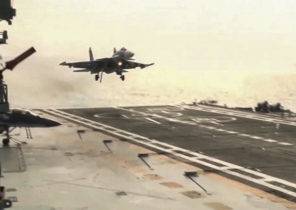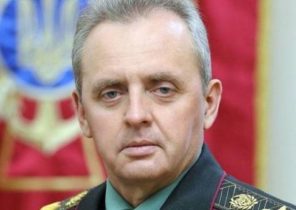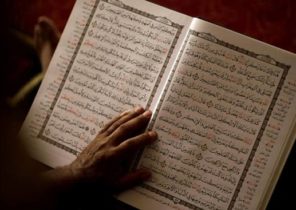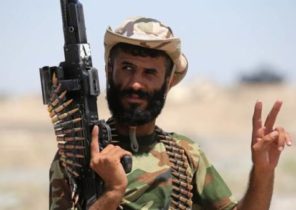
Neo-Nazis are stupid people, says the Finnish SS officer, Brunolf Palmgren (Palmgren Brynolf).
Untersturmfuhrer SS, Palmgren Brunolf holding with both hands a dagger, and then takes out his black as pitch, of the sheath.
“Meine Ehre heißt Treue,” says Palmgren German. These words are engraved on the steel surface of the blade in large Gothic letters.
“That was our motto.”
“Loyalty is my honor.”
About 1.4 thousand Finns served during the Second world war in the Finnish battalion of the German Waffen SS troops. To our time survived 17 people.
Brunolf Palmgren − the last Finnish officer who served in the Waffen SS.
“We don’t have much. I’m 94 years. Most of the Finns who served in the Waffen SS, was born in 1922”.
Palmgren on the bookshelf next to the white Aalto vase is a reduced copy of the flag of the SS battalion.
On the table − fresh issue of the newspaper Der Spiegel, is dedicated to the history. Red glossy cover says: “Russland vom Zarenreich zur Weltmacht” − “Russia from tsarist Empire to world power.”
Palmgren graduated from high school in the spring of 1941 in the period between the two wars. Since graduation, he returned home in the evening to the morning to take the train to the city of Vaasa.
In Vaasa expected ship Bahia Laura, who took him to Germany.
Why is a newly-minted graduate wanted to go to war in Germany?
“All Finnish people believed that the Winter war was unjust,” says Palmgren.
“Then Patriotic feeling took possession of the whole country. The winter war all United to fight against Russia”.
The loss of Karelia haunted Finns. Most of the volunteers went to Germany from Vyborg province.
Thoroughly studied the information about the Finnish SS battalion Mauno Jokipii (Mauno Jokipii) believes that from enrolled in the Finnish SS battalion of Finns every fifth belonged to right-wing radicals, whereas their number in the General population of Finland amounted to 6-8%.
Approximately 40% of Finns who served in the Waffen SS, were young people 16-19 years.
Palmgren was a member of the civil guards. So he learned that Germany Finnish recruit volunteers for training.
“I was most interested in getting a good military education. My father was trained in Germany to be an engineer. I treated Germany positively”.
Palmgren says that at that time he had no idea about the Waffen SS. The attitude of the Germans was initially positive. Military discipline of the Germans struck.
“I gradually learned. Understand that if you Balk, you will start to train”.
What did You feel when he took the oath of allegiance to Adolf Hitler?
“Actually, I have not experienced any feelings. It was a kind of ceremony. For myself, I decided that it’s a promise that we are ready to fight against communism.”
The Waffen SS was part of a larger organization, the SS, which included, in particular, the secret state police the Gestapo, which feared the troops “Dead head” protection from the concentration camps.
After the war at the Nuremberg trials the Waffen SS was declared a criminal organization. Finns fought in the division “Viking”, participation in which war crimes are not installed.
Mauno Jokipii believes that most units of the Waffen SS fought in the framework of international law, and that the total of those convicted, can be given. According to Jokipii, the Finnish battalion was a “special phenomenon in a special time.”
Palmgren was among the 20 Finns who studied in Germany in the famous SS Junker school in bad Tölz.
“There was very good training. I’d call it a school of gentlemen. It was taught, including how to behave with women”.
In the curriculum of the school consisted of downhill skiing. Students took to the slopes for learning to slalom.
Palmgren have still preserved a document of completion of this school. It filled in marks in ten subjects, such as tactics, military topography, weaponry, and engineering. The most common rating is “ziemlich gut”, very well.
Graduates of the school were given the rank of untersturmführer, that is, Lieutenant.
Palmgren the time when he served in the SS, I remember as a “very interesting journey”.
“Of course, often we cursed this place. But discipline is discipline. Remembering it all, no regrets”.
“About the concentration camps we knew nothing, and in the Newspapers about them, of course, did not write”.
Palmgren says that pupils were taken for examination in the concentration camp Dachau.
“It was a propaganda trip. They wanted to show that Jews live well. There was a huge barracks in which they slept.”
In Germany, served in the SS offered to read the newspaper of the national socialists vö lkischer Beobachter.
“This, of course, was a propaganda newspaper. Later, when I returned to Finland, I realized the impact on us propaganda,” says Palmgren.
Former SS officer says, that when he returned to Finland and fighting at the front again within a year, he was confident that Germany would win the war.
“This is a good example of how one-sided propaganda affects a person, although it seems that he makes the decisions. When repeat and repeat all the time the same”.
After returning home, Palmgren began to serve as a Lieutenant in the Finnish army.
“Sent directly to the Karelian front. I have had great difficulties, because before that I served in the Finnish army any day.”
Palmgren snorts when it comes to neo-Nazis.
“All extreme movements bring evil. They have a limited view of things. They are real opportunists, those who use human stupidity. They hate all foreigners, and indeed all”.
SS, Keio Kaariainen (Keijo Kääriäinen) led during the war years a detailed diary
“Father made the house a hiding place,” says Pekka Kaariainen (Pekka Kääriäinen).
“He slept in a cupboard upstairs with a machine gun. If anyone came, he just would not go away”.
Father Pekka for Kaariainen − a former SS officer. He was one of those who after the war feared for his life.
But none of them never came. They say that once someone was sneaking outside the window.
Pekka Kaariainen is Chairman of the organization Veljesapu-Perinneyhdistys, which helps former SS men and their widows, and keeps the traditions of the Finnish SS battalion.
Become a member of the organization, not everyone can.
“We don’t need extremists. We are a politically independent organization, which gladly accept concerned citizens of Finland with a good reputation,” says Pekka Kaariainen.
The organization publishes a newspaper Achtung and made a list of all the Finnish members of the SS.
For Keio of Kaariainen (1923-2001) the outcome of the Winter war was a heavy blow. He swore he wouldn’t dance as long as Finland flag will not flutter over the Vyborg castle. He kept his word and don’t even dance at my wedding.
“He always said he had to hurry to the front, while the Russian is not over,” recalls the son of Pekka his words.
Keio Kaariainen kept a detailed diary of his military days.
They described the harsh everyday life of soldiers of SS divisions: cleaning, expectation and homesickness. The fighting at the front, famine, endless rumors.
Keio Kaariainen went to Germany in may 1941. The diary tells that his thoughts were occupied future.
Will see if I ever go to Vancouver, my home, friends and everything that I lived?
Kaariainen just turned 18 years old. A month later, he witnessed the German attack on the Soviet Union.
Woke up at 4 a.m. because of the quaking of the earth and a distant rumble. Countless squadrons with a crash flew over us to the East, and flew new.
In the first week of the war, Keio faced with the ruthless offensive of the war.
Finally we stopped at some small village where the inhabitants from all sides we were carrying sandwiches, milk and eggs. In gratitude, the Germans shot several dark-haired Ukrainians, claiming that it is the Jews. It seems to me that this was the height of beastliness!
The tension of war played with a young man joke.
Night shot at swaying in the wind in the trees, thinking it was Russian.
Then the war began to die and the Finns too. In August, Kaariainen noticed in the Park of the Ukrainian city two graves of soldiers of the SS.
On one of the graves bore the name of the liaison officer ensio Pihkala (Ensio Pihkala). Kaariainen was terribly shaken.
When he appeared in the companies, it was for us as a glimmer of light on a dark night.
During his service in the Waffen SS Kaariainen was twice wounded. The first time it happened in early September in Kyiv.
The grenade exploded right in front of my eyes a few meters away from me, but luckily I managed to pull the helmet to protect the face. The body received a sensitive wound. If an axe was hit in the leg and shoulder. Shoulder burned like fire.
The wounded soldier was taken for treatment to Germany. A shoulder wound is healing painfully slow. It remains open even after a month. In December he was able to visit on holiday in Finland.
In February, Kaariainen returned back to Germany. He waited for the day of the oath.
I missed because, in principle, do not really approve of the oath to a foreign state.
In the early spring of 1942, Kaariainen missed Finland.
The evening went strange rumor about sending to Finland, but, unfortunately, he turned out to be false.
In may 1942, Kaariainen was birthday.
Today I turned 19 years old, and since no one congratulates, congratulate yourself. Before lunch basking in the sun and eating sunflower seeds.
In the early summer of 1942, notes in the diary tell of the realities of war.
In the morning we received new underwear. Read the German and Finnish books in the Evening − the sounds of the accordion, moonlight and shooting guns.
In September, Kaariainen and I were on vacation in Finland. In November he again returned to the front.
In January 1943 he was wounded a second time. The diary describes violent melee.
Kaariainen says that he led in order to get him as a trophy from the Russian machine gun “Maxim”, when I noticed 15 metres running in his direction Russian.
My machine was away, and before I had time to do anything, Russian released all in my head. I fell to the ground, and when began to rise, Russian turn released once already from a distance of 2-3 meters. It felt as if the whole abdomen was torn to shreds, but instinctively I clung to the Russian. Fortunately, Vanya dropped the gun.
Finnish and Russian soldiers thrashed each other with their fists. Kaariainen began to call for help.
Don’t know what would have happened if Torvinen (Torvinen) is not appeared from behind the corner with a gun in his hand.
Gun Torvinen decided the fate of the Russian.
Service Kaariainen in the German army at the front was over. Service in the Waffen SS continued, but on the front, he never came.
After returning to Finland he was sent to officer training in Niinisalo. The next time he got to the front, when he was in the Finnish army.
Finnish SS battalion fought on the Eastern front
In March 1941, Germany declared desire to begin recruiting in the Finnish battalion of the Waffen SS to be included in the composition of the German troops. Finland agreed to this in April.
According to Mauno Jokipii engaged in the study of Finnish soldiers of the Waffen SS, Finland sent a battalion because he wanted to use it to provide diplomatic support to Germany, facing the threat of the Soviet Union.
The Ministry of foreign Affairs of Finland has entrusted the management of the recruitment of the former head of the Central detective police of Finland Esko Rijeka (Esko Rieki). According to Jokipii, Riekki weed out the extremely left-wing and right-wing extremists. The first group of volunteers went to Germany in may.
Volunteers were only 1.4 thousand, of which 1.2 thousand were recruited in the spring of 1941. In the fall of 1942 from Finland was sent to another company, consisting of 200 volunteers to make up the loss of the Finnish battalion.
Volunteers were contracted. They signed with the Waffen SS a two-year contract.
The Finns sent in a new division “Viking”. It consisted of three regiments: the regiment “Westland”, consisting mainly of the Flemish and the Dutch, the regiment “Germany”, consisting of German volunteers, who lived outside of Germany, and the regiment “Nordland”, composed of Danes, Norwegians, Swedes and Finns.
Motorized division “Viking” was involved in a lightning attack Germany in 1941. Part of the Finns participated in the offensive from beginning to end. Part joined only six months after the training. Division “Viking” was part of the armored group that had to move from Poland through the Ukraine to Rostov. “Viking” went to the Dnieper on August 9. In early December the division had reached the Mius river in the South-East of Ukraine, where he led a fighting position until the end of the winter of 1941-1942.
Germany continued the offensive towards the Caucasus until August 1942, where the offensive was stopped.
The Finnish battalion took part in bloody battles near the town of Malgobek, which began in late September. In these battles in killed and wounded the battalion lost 434 fighter that was approximately 60% of its fighting strength.
In the winter of 1943 the Germans retreated to the river don. Trench warfare continued on the East Bank of Donets river, where the Finns fought until April 10. After that, they took over the front line.
A two-year contract over the Finns in the spring, at which time they were able to leave troops of the Waffen SS. They had to return to Finland.
The Germans wanted Finnish battalion extended the contract, and even suggested to increase it to the size of a regiment with the name “Kalevala”. But it is not agreed.
After the departure of the Finnish division “Viking” was divided into two divisions — “Wiking” and “Nordland”. They were defeated in the battles of Budapest and Berlin.
On the German Eastern front were killed 256 Finnish SS. Survivors healthy men after the return was distributed in different parts of the Finnish army. At the front 113 of them died.







